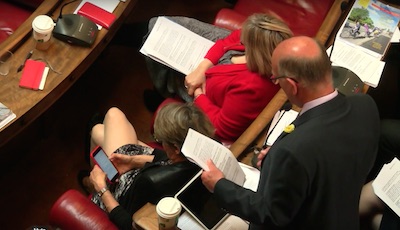
Cambridge Liberal Democrats are the largest opposition party on Cambridge City Council.
They have what is in effect a shadow “cabinet” poised to take over the council if they regain control.
I thought it would be useful to collate who these people are, and their respective roles:
| Name | Shadow Role |
| Councillor Tim Bick (@cllrtimbick) | Leader, Policing, Strategy, Transformation, Finance and Resources |
| Councillor Mike Pitt (@mhpitt) | Public Toilets, Bins and Environment |
| Councillor Sian Reid (@sianreid27) | Communities |
| Councillor Nicholas Avery (@NickAveryTrump) | Housing |
| Councillor Catherine Smart (@chlsmart) | Planning Policy and Transport |
| Councillor Ysanne Austin | City Centre, Public Places |
I created this table to help me when I’m campaigning on an issue which comes into one of these areas of shadow responsibility as it will make it easier for me to quickly identify the relevant opposition councillor to lobby. Opposition councillors are in a position to challenge and scrutinise in their areas of focus.
I thought I would share the table in case it is of use to others.
It’s notable that Cllr Bick is positioned to take on the role of both Leader, and Finance and Resources if he becomes leader of the council again, a move akin to having the same person serve as both Prime Minister and Chancellor.
I can’t see this information presented clearly on the Cambridge Liberal Democrat website, or in a collated fashion on the Cambridge City Council website.
The Liberal Democrat “Spokes” for each area are identified in the committee information on the democracy area of Cambridge City Council’s website, it is that material which I have based my table above on.
When I first observed council meetings and heard reference to “spokes” I remember being confused for a time, envisaging spokes on a bicycle wheel. My first thought was to interpret the commonly used council jargon “chair and spokes” as referring to councillors with a radial rather than oppositional relationship to a meeting’s chair; though I realised what was intended within a few seconds.
“Spokes” is in fact short for “spokesperson” though I’ve never seen this expansion noted formally in council documents.
It has been suggested on a number of occasions that the Liberal Democrats hold elections for these positions at secret private gatherings of their local members. Councillors compete for the roles and set out what they would do with them. I have suggested that publicising what goes on within parties might well strengthen them. Formal public revelation of a strong internal democracy, giving members a say, might even encourage people to join so they can take part.
Cambridge City Council uses the term “executive” rather than “cabinet”. From a public perspective there is no election to executive positions, or their “shadow” opposite numbers, in the guildhall chamber. Party / group leaders appear to exercise patronage and decree appointments made. Cambridge City Council’s constitution states the council leader is elected by the full council but then:
Other executive members shall include a designated Deputy Leader and shall be appointed by the Leader. The Leader shall be responsible for appointing and removing its members, for allocating portfolios and areas of responsibility and for allocating decision making powers.
I have no idea if the Cambridge Labour Party, who currently run Cambridge City Council, elect their executive members but would be interested in knowing more about how they operate. Again I think greater transparency could, depending on what’s revealed, lead to executive members being in a stronger position and to more people joining and taking part in the party, and through that taking part in efforts to improve our city.
One response to “The Liberal Democrat Shadow Cabinet at Cambridge City Council”
Cambridge Labour do publish the identities, and roles, of their executive team on their website:
http://www.cambridgelabour.org.uk/cambridge_labour_s_exec
Here it is formatted in the same way as the “shadow” table above: